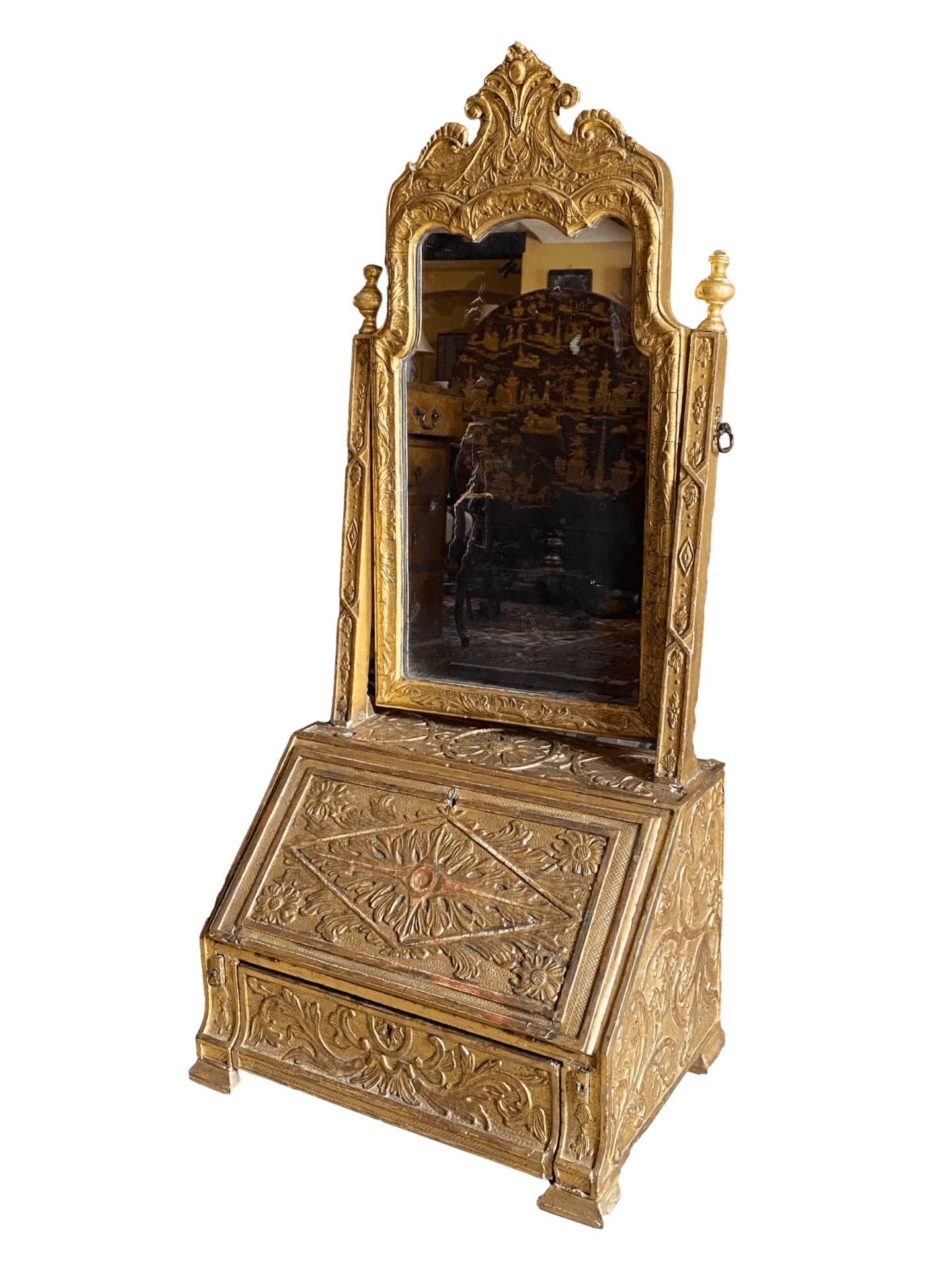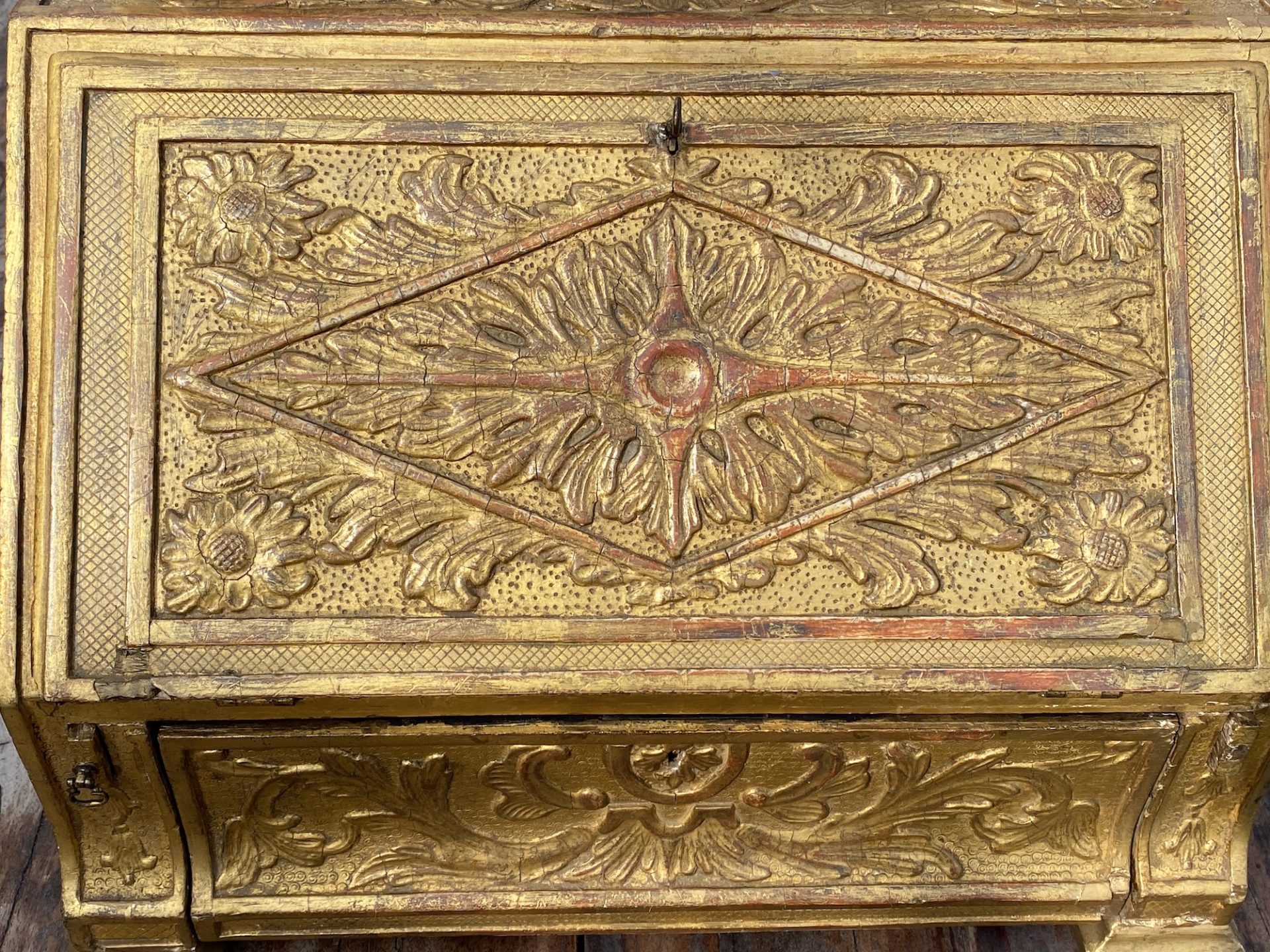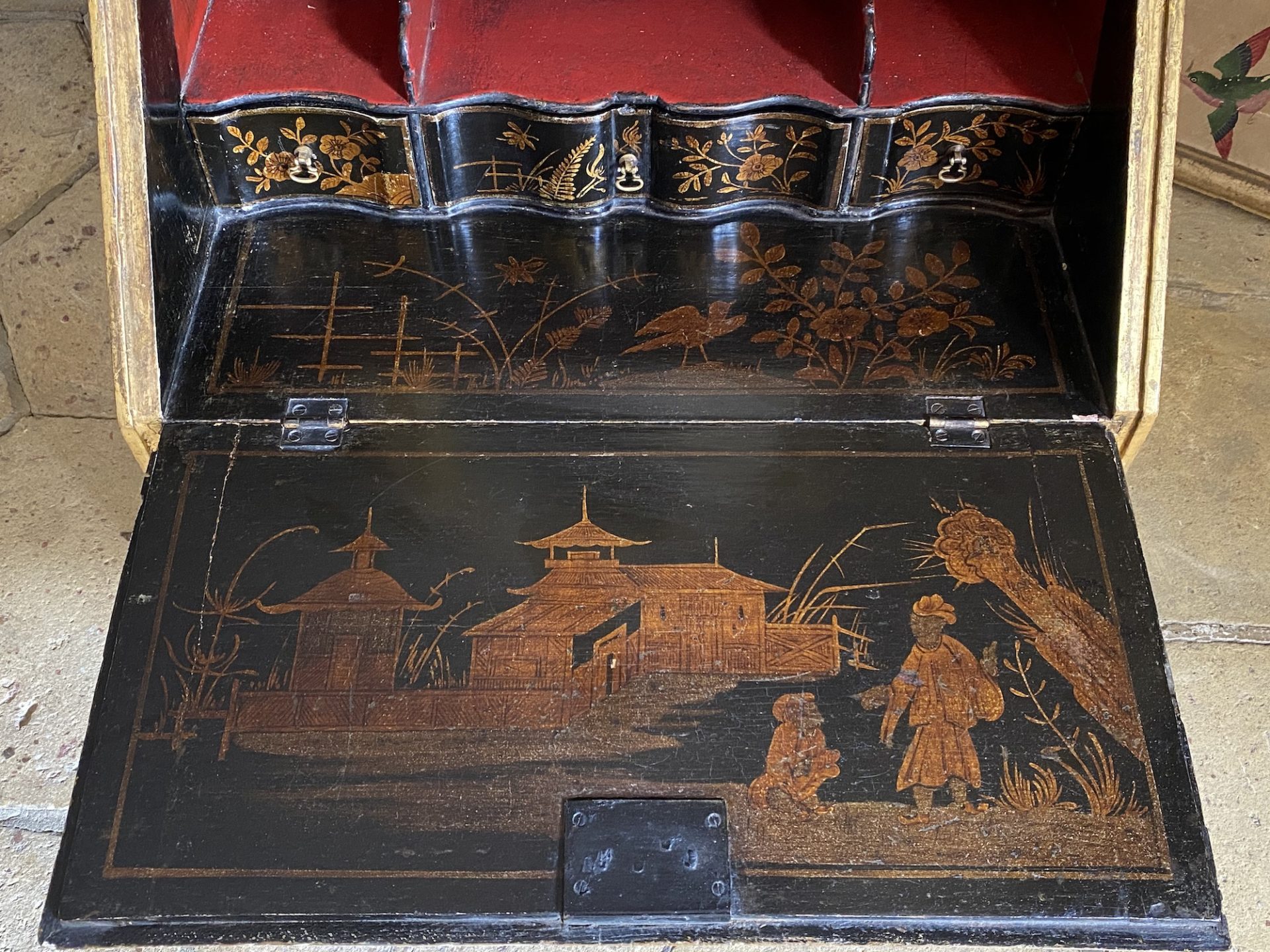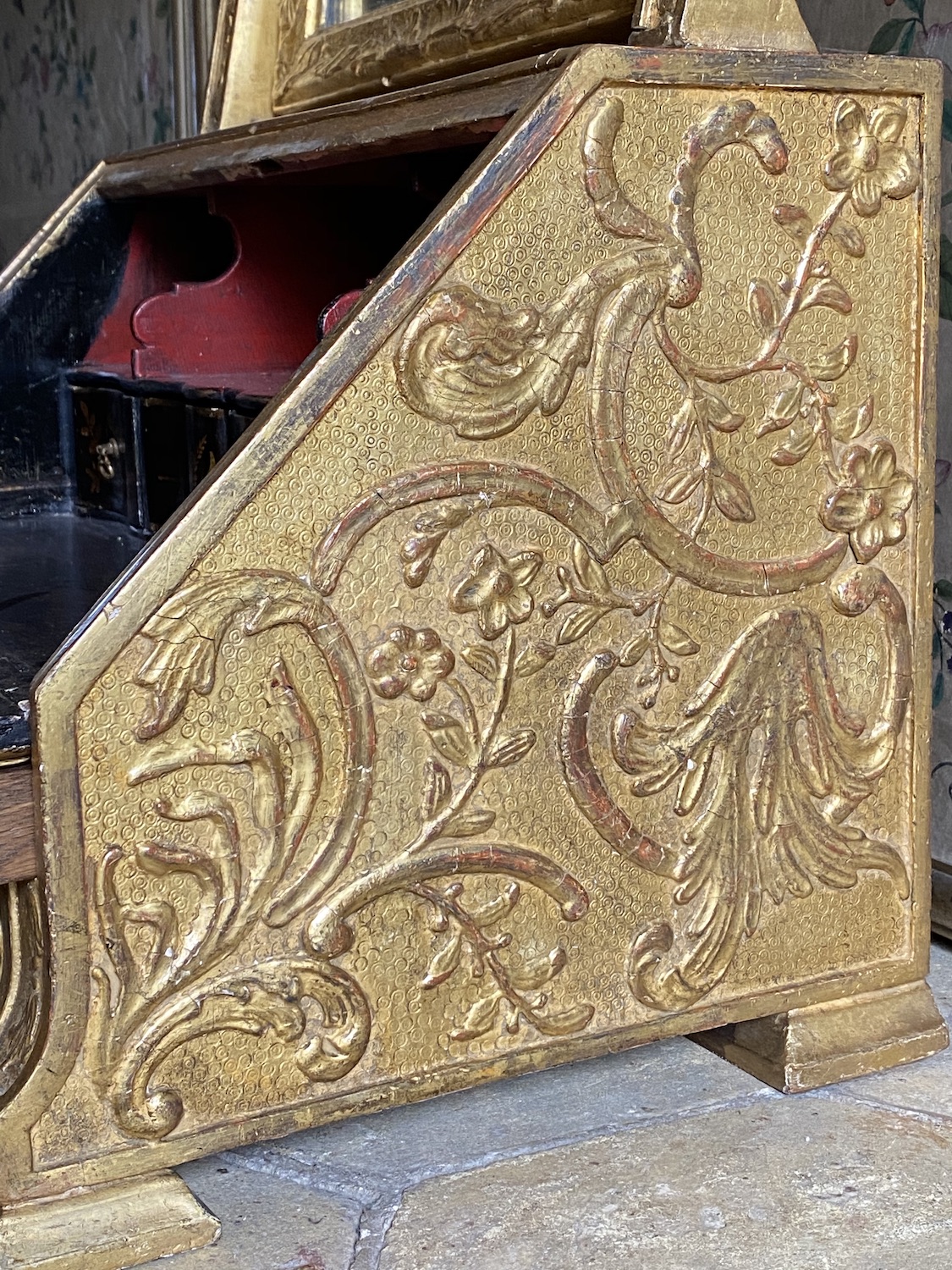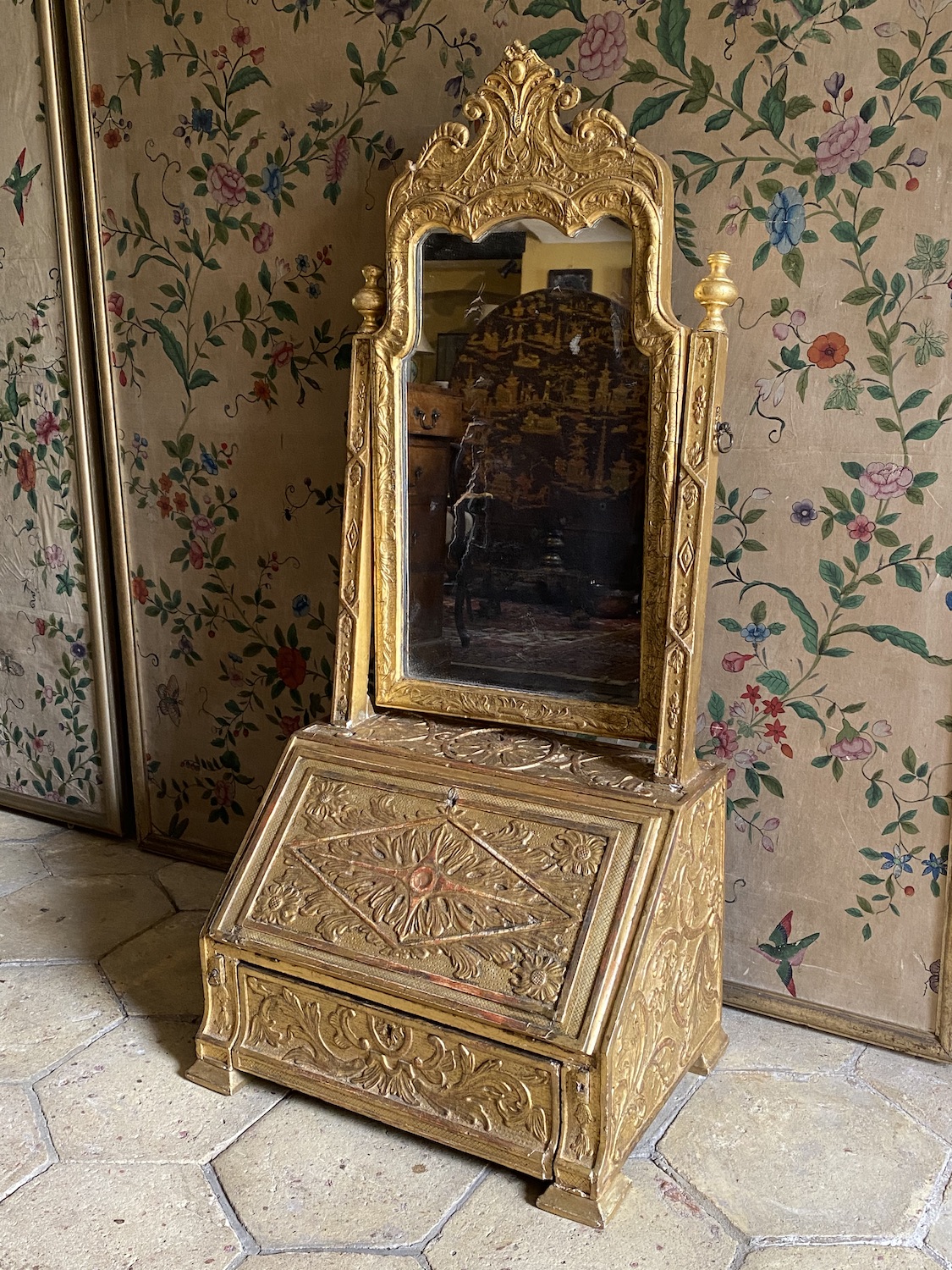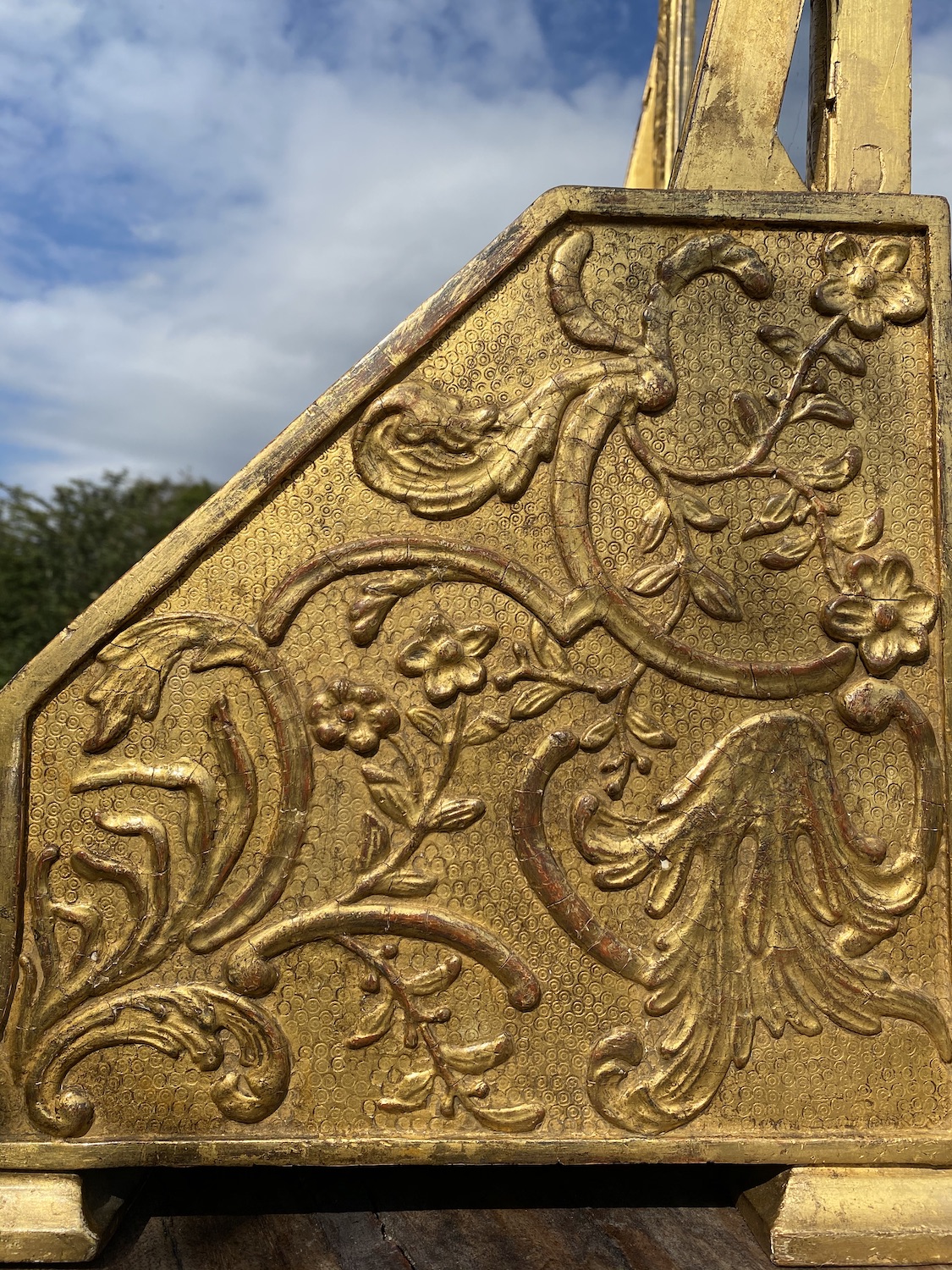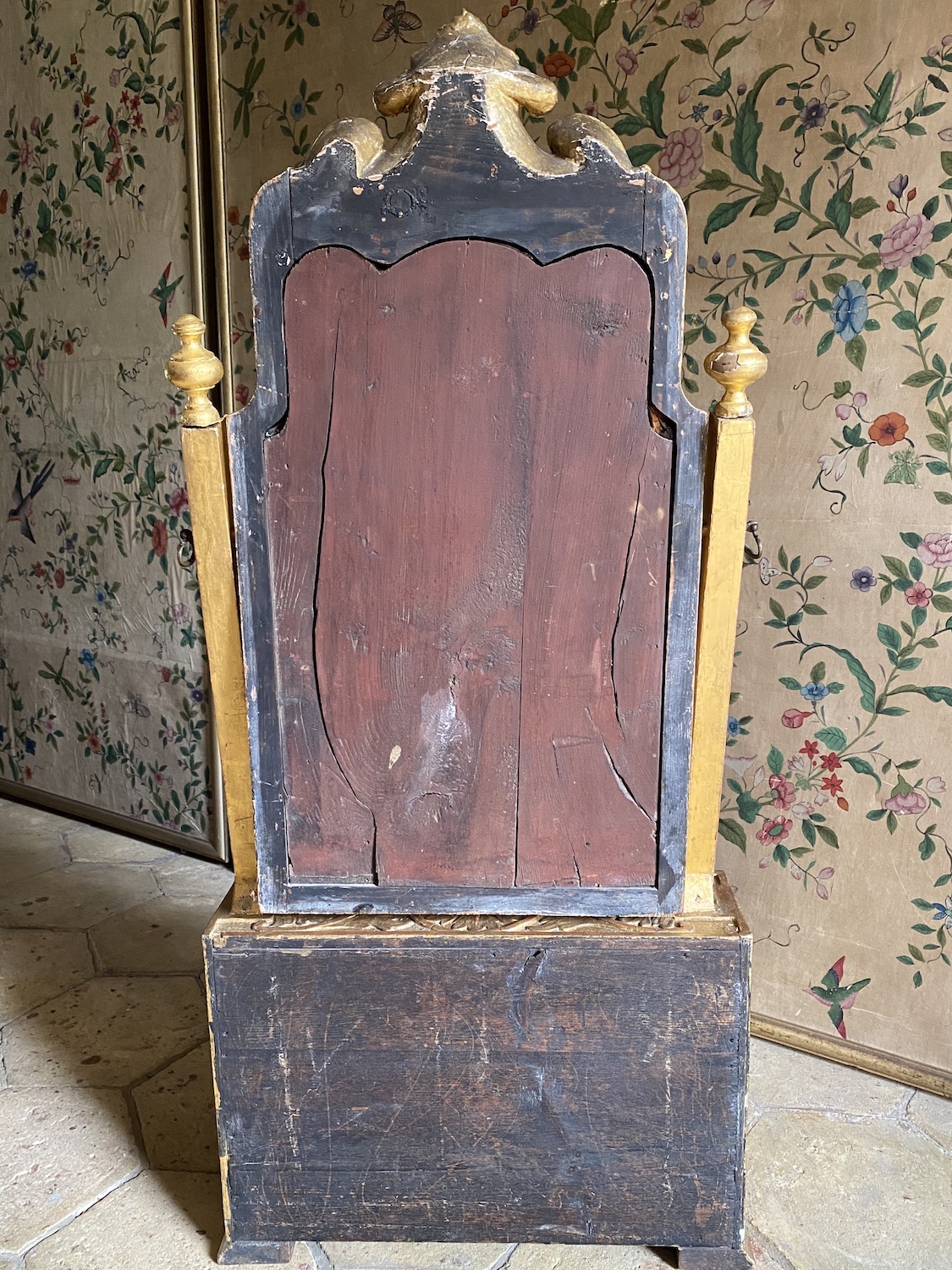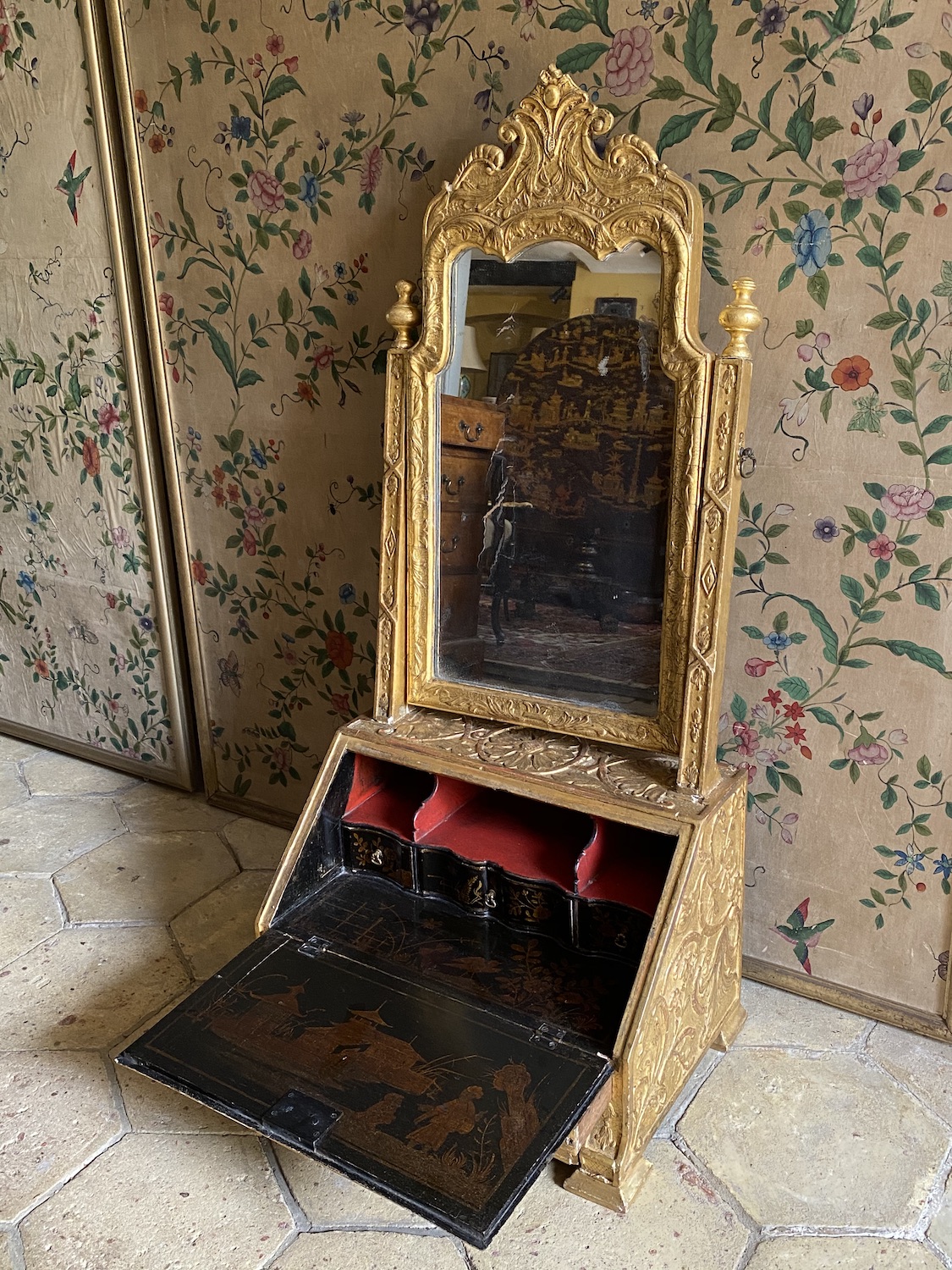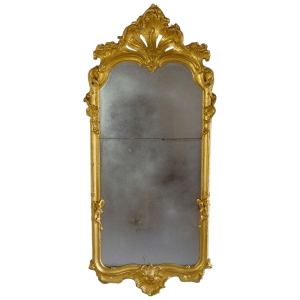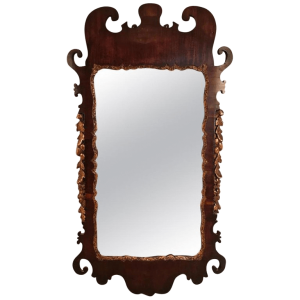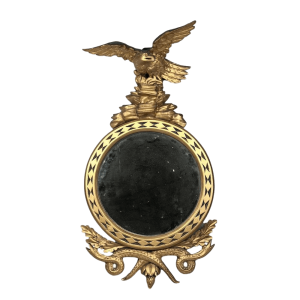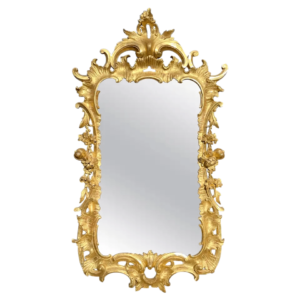Description
A very rare carved gilt gesso dressing mirror. Queen Anne / George I period, ca 1710-20.
Decorated all over with the original finely carved gilt-gesso surfaces with typical circular punched reserves.
The hinged fall – of what one might refer to as the ‘table bureau’ section – reveals a shaped, fitted interior, gilded and japanned (”lacquered”) in black with red.
Some external carved surfaces show very minor areas of wear revealing the authentic bole and gesso ground. Overall in superb condition.
H: 39 1/2’’ (100 cm)
D: 12 1/2’’ (31.5 cm)
W: 17 3/4’’ (45.5 cm).
Reminiscent of the work of London-based James Moore (ca 1670-1726), a supreme exponent of the art of cut gesso and gilding.
This dressing table mirror is possibly unique in this form, and as such has survived some 300+ years in remarkably original state.
It may have been part of a suite of furniture, would have been extremely costly, and very much the reserve of the aristocracy and wealthy in the early part of the 18th century.
For documented pieces by James Moore visit the Royal Collection Trust:
https://www.rct.uk/
https://en.wikipedia.org/wiki/James_Moore_(furniture_designer)
James Moore (circa 1670 – October 1726) was established at Short’s Gardens, St. Giles-in-the-Fields. He was in partnership with John Gumley from 1714 and, unlike his partner, did not advertise – the sole published reference to him being a notice of his death in The Weekly Journal or The British Gazetteer. As Royal cabinet-maker he supplied walnut and mahogany furniture for the Royal Household, the Royal Yacht, and the King’s servants and mistresses, as well as the rich gilt-gesso work for which he is best known.
Moore is especially renowned for gilt-gesso furniture: tables; looking glass frames; and candle stands. A pair of gilt-gesso side tables bearing the crowned cypher of George I in The Royal Collection, and the pair of candle stands en-suite are incised with his name – an unusual practice at the time. At Erddig, such furniture by Moore can be linked to surviving bills and receipts from James Moore and John Belchier, 1722-26.
Gilt-gesso furniture is also encountered in fine Louis XIV and other European furniture of the period.
Literature:
Ralph Edwards CBE FSA The Shorter Dictionary of English Furniture, Hamlyn, London (Fourth Impression 1972) ill. 5, p. 363. One of a pair of looking glasses by James Moore, 1720. Erddig, Denbigh. The crest is reminiscent of that upon our dressing mirror, which we are offering here.
Kreisel, Heinrich, Die Kunst Des Deutschen Mobels, CH Beck, Munchen (1970) ill. 345, p. 347 – note similarities in the treatment of the top of the crest. This mirror was last seen in the collection of Augsburg Castle.
Synge, Lanto, Great English Furniture, London (1991) p. 52.
References:
Symonds, R. W., A Royal Scrutoire, Connoisseur (June 1940) pp. 233-236.
Symonds, R. W., English Gesso Furniture, The Antique Collector, Vol. XXVII (August 1956) p. 140.
A Golden Cabinet, Mallett Spring Catalogue, London: Mallett & Son Antiques (2003) pp. 6-13.
Murdoch, Tessa, The king’s cabinet-maker: the giltwood furniture of James Moore the Elder, Burlington Magazine, vol. CXLV (2003) ill. 8, p. 410.
Noticia verdadeira do ornato, que se vio nas cazas de Madre Soror Paula Maria, Biblioteca Nacional de Lisboa, manuscript – BNL, F.4640 – published in Guimarães, J. Ribeiro, Sumario de Varia Historia (1872) pp. 67-70.
Dias, Carlos Malheiro, Cartas de Lisboa. Primeira Série (1904) Lisboa, Livraria Clássica Editora (1905) p. 109.
Proença, José António, Mobiliário da Casa-Museu Dr. Anastácio Gonçalves (2002) p. 183.



